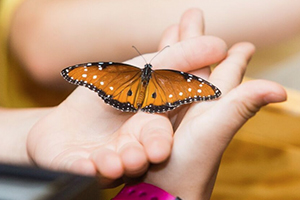Bellís Vireo
A rapid-fire series of bird notes coming from the streamside mesquite thickets announces the presence of the Bellís Vireo. The short jumbled phrases sometimes rise at the end and sometimes drop, as if the bird were asking and then answering a simple question, and the whole song has a clinking quality that sounds as though the bird has a mouthful of marbles.
Tending to remain in the depths of dense thickets, Bellís Vireo is often
hard to see. When it does finally allow a view, it may not make much of
an impression: pale olive-gray, it lacks distinctive markings. However,
it does convey a sense of energy as it hops about busily among the foliage,
seeking insects. And like other species of vireos, it is a persistent
singer; the males contin ue
to sing through the heat of the day and through late summer and early
fall, after most birds have fallen silent.
ue
to sing through the heat of the day and through late summer and early
fall, after most birds have fallen silent.
Vireos build compact, cup-shaped nests, often suspended by the edges in the horizontal forks of branches. Their nests are not hard to find, and they are found all too often by cowbirds, parasites that lay their eggs in the nests and leave them for the vireos to hatch and raise. This brood parasitism seems to have hurt the population levels of Bellís vireos in some regions, including parts of the midwest and California, but so far their numbers are holding up fairly well in the Sonoran Desert.
óKenn KaufmanBellís Vireo (Vireo bellii)
Order: Passeriformes
Family: Vireonidae (Vireos)
Other common names: Arizona vireo
Spanish name: vireo
Distinguishing features
This is a nondescript little bird; its back is olive-gray and underparts are whitish with pale buff-colored sides; indistinct eye-ring and two faint wing bars.
Habitat
Bellís Vireo are found in mesquites, desert willows, moist thickets, streamsides, and forest edges.
Feeding
ē Diet: Consists mainly of insects.
ē Behavior: Typically forages in low brush within about 10 feet of the ground; searches for insects among the foliage although it sometimes takes its prey midair, or hovers and picks it off leaves and branches.
Life History
The nest is situated in the fork of a horizontal branch, usually only 2 to 5 feet off the ground. In typical vireo fashion, the nest hangs from the fork and is cup-shaped with a finely-woven rim. Grasses, weeds, plant fibers, bark, leaves and spider webs are used. The inside is lined with fine grass. White eggs (3 to 5) with brown or black spots are incubated by both parents. The eggs hatch in about 14 days and the young are ready to leave the nest 11 to 12 days later. The young are fed by the parents for an additional 3 weeks.
This species is frequently parasitized by cowbirds, which has resulted in decreasing numbers over much of its range during the last 40 years.
Hatchlings
The patterns of development of hatchlings can be divided into two general categories, precocial and altricial. At hatching, precocial young are downy, their legs are developed, their eyes are open and alert, and they are able to feed themselves. Precocial young are frequently called chicks. Altricial young are hatched nearly naked, blind, and weak; all they do is gape for food. Altricial young are called nestlings while they are in the nest, and fledglings once they fledge or leave the nest. At fledging they are nearly at adult weight. Most perching birds have altricial young. Of course there are always some species that do not exactly follow the typical patterns.










